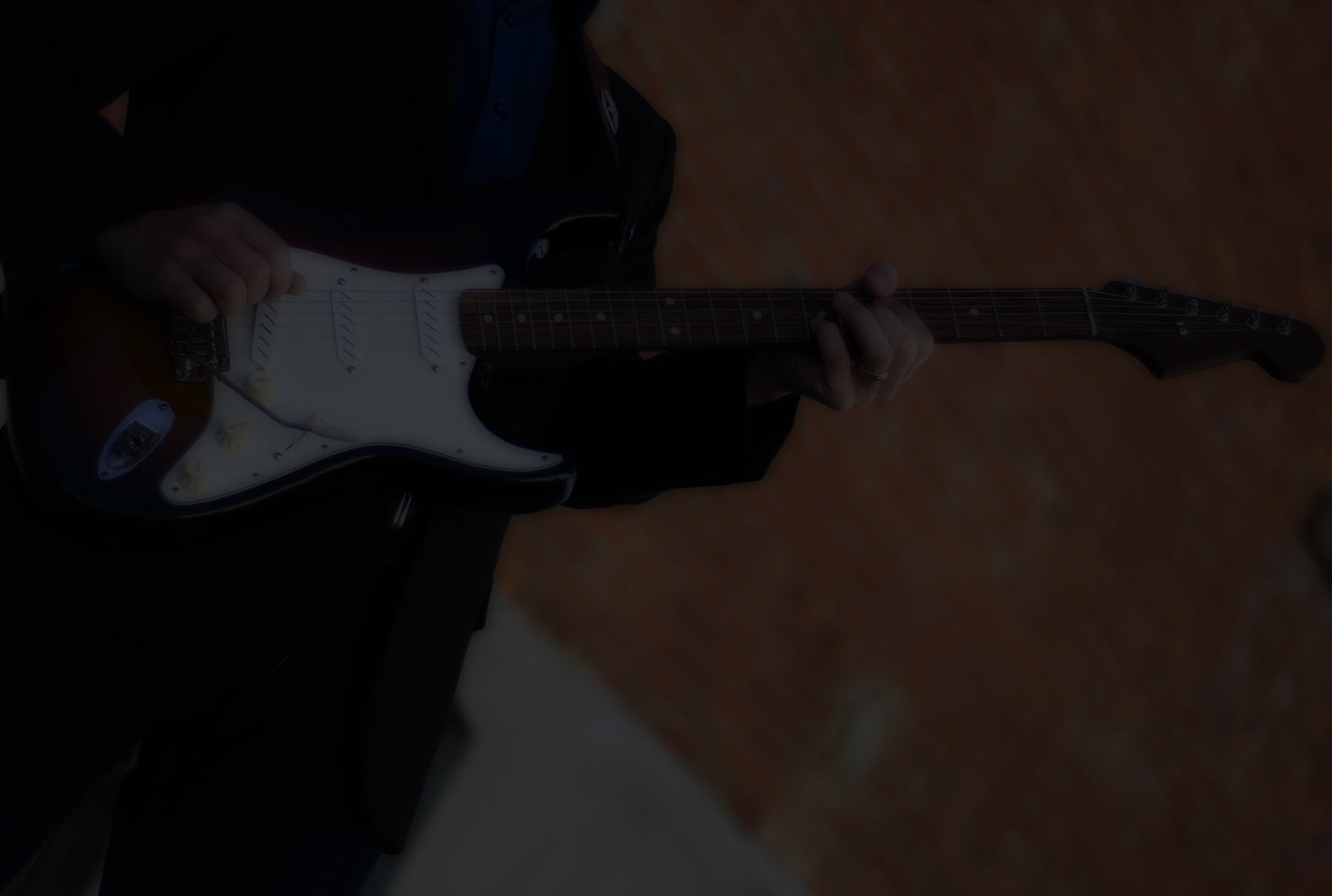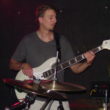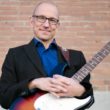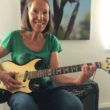Here's another spontaneous recording session. Since the forum seems quiet, I'll throw this afternoon practice session up for inspiration. I called this Stateside since I'm just back from holiday and getting some guitar time before the work week begins.
Sounds great! How did you record all those instruments? Is it mic'd with your live drummer and then overlays done in your studio?
Clayton, I’m thrilled, there’s a lot going on. Pretty creative and full of energy for a spontaneous session, or just because of it 😊 !
What also impresses me is how well the whole thing is mixed. Wonderfully balanced. It’s a great pleasure to enjoy your recording with good headphones.
Like Robert, I’m interested in how you did this recording and how you put it all together.
I look forward to your explanation,
Birgit
Wow! I am happy to see I struck several notes of interest with this project. This was done entirely on Garage Band, using my Nashville tele plugged direct via MOTU interface (I like this interface better than my trusty Focusrite Scarlett). The whole thing started with a warmup before sitting down to some lessons and the first thing out of my hands sounded good so I tapped out a tempo on the GB metronome and recorded the Rhythm Guitar 1. RG 1 is a bit of hybrid picking the bass note with a thumb pick and adjacent strings with fingers (or finger and thumb pick). Then I dialed up a GB drummer: Gavin who plays Indie Rock and tweaked the dynamics in the GB interface. Once I was happy with the fundamental Rhythm Guitar 1 and drums, I moved on to Rhythm Guitar 2. After Rhythm guitar 2 I moved on to what we will call the Solo (lead guitar). After that I felt like adding a simple bass line using the GB Bass patch with my tele on neck pickup, tone dialed back, and palm muting the strings. Almost done, I wanted to challenge myself to fitting in a Solo 2 at the end on the project.
I've gotten pretty quick as setting up a simple pattern to then solo over, and believe me there are many takes in the Solo 1 as I just kept practicing different ways to play over the track I created. All of this, including constructing multiple parts, makes you think about voicings, phrases, double stops, and how many ways to play and add parts without running into each other. And of course, there's all the fun in effects and textures, chorus, delays, echos, wah (or even a fixed setting on the wah as is used here in Rhythm Guitar 2 to give a certain grind tone). And then which pickups to use. Recording like this really makes me think and ultimately be a better player with others.
So I have created several isolation tracks from the project- the titles should be obvious. You can listen to various pieces as they are added. And with the Solo 1 & 2 I simply exaggerated the pan left and right to help separate the two voices better. The names should also pop up when you hover over the play button. I offer these tracks as insights as to how I was thinking without the clutter of everything at the same time. The one thing that sticks in my mind is that I am typically a behind the beat rhythm player- see if you can catch the style.
Interestingly, I never changed the dynamics of the GB Drummer to "break it down" or add in som intensity since this was a short project. But there is a lot of dynamic changes that you can add to automation in GB so that the drummer changes feel, volume, intensity throughout the song. For that matter you can add a second drummer, say a little percussion with congas, etc to bump up or soften certain parts.
Stateside RG 1
Stateside RG 1 with GB Drummer
Stateside RG 2 with GB Drummer
Stateside RG 2 with Bass and GB Drummer
Stateside RG 1 RG 2 with Bass and GB Drummer
Stateside Solos 1 & 2 (Spread Pan) w Bass & GB Drummer
Thank you for your insights, Clayton, and the explanations how you built the project. I appreciate that very much.
For me it is very instructive to follow your explanations and also to listen to the individual tracks separately.
And yes, when I listen to the individual tracks, I have a lot of respect for how you still have to have the meta level in mind when recording the tracks, so that everything fits together afterwards.
Keeping an overview like this is the key to success from my point of view 👍.
I’m deeply impressed,
Birgit
@bluesiline My Pleasure,, Birgit! Recording is such a good tool for growth and improvement. I can lose myself and spend a lot of time in a recording space. I cannot say enough about the numerous benefits of recording. Confidence, planning, arranging, repetition repetition repetition (I LOVE continuous loop overdub), dynamics, and so much more....
Loop Overdub in GarageBand and Logic lets you keep repeating a section while recording and each time a section is recorded it becomes another "take." This lets you just hit the record button and record, record, record as many alternate takes. You just stay in the flow.
I'll repeat the story that started my home recording sessions. I joined MGA and worked on some courses when Robert had a hand injury and could not play for about 6 weeks. He told members and suggested they ask questions. Now I had been in a band that recorded at a studio 10 years before, and it was a big learning experience but the details of recording into the computer interface on Pro Tools was not part of the learning process (and that software is complex). GarageBand is great beginner/intermediate software and has continued to grow. So I asked Robert to give some recording instructions and insights. I believe he even posted a few videos on the old MGA site. Then I watched a few YouTube videos and started recording.
My first recording session led me to a long multi-track recording with electric and acoustic guitars and even a few vocals. I was hooked.
@clayton, loop overdub is something I haven't tried yet. I should definitely start doing that! In Reaper I have all the possibilities to do that. Thanks for the suggestion.
I think that today, with all the software available, DAWs and everything, we have so many opportunities to try things out, depending on skills and interests.
The prerequisite is simply that we sit down and learn - me included - and then try, try, try....
……. and keep coming up with new ideas!
Continue having fun
Birgit
Sorry if I missed you mentioning it, but did you use guitar tones from GarageBand itself?
Did you use any other software than GarageBand?
GarageBand is incredibly useful and I think I could make some lessons on how to use it for improving as a guitarist.
@robert Stateside was all Garage Band including Guitar Tones and Drummer! And I am simply using the preset patches with a few tweaks. Often I just use a palm muted guitar with a Bass preset to play a bass line- no bass guitar needed.
Your recording lesson in 2015 got me up to start in GB, and GB has expanded so much with drummer and some great synths. I don't get much time to tinker with the synths but the Alchemy Synth interface makes it easy to find tones, chords and automated arpeggios.
GB is Free Free Free on Mac, what a deal!
I think it would be very empowering if you constructed some lessons.
I still use a very old version of Garageband on an ancient iPhone for the sound of my e-piano. I am thrilled with it.
But since I‘m otherwise in the Windows world, I work with other programs.
Maybe there will be another opportunity for me to dive into the Mac world. Garageband is such a great program. Oh yes!
And Robert, if you ever do a lesson on Garageband, I will follow it with much interest.
Clayton, I have another question: what exactly do you mean by "automated arpeggios"?
Birgit
Clayton, I have another question: what exactly do you mean by "automated arpeggios"?
Synths often have an apreggiator that is a preprogrammed pattern of scale or chord notes. Press a single note key and an entire sequence of notes are played. You can speed up or slow down the note speed. Basically the arpeggiator is slightly sophisticated sequencer. A simple but very popular example is the opening sequence to Stranger Things. It's especially helpful for folks not skilled at precise keyboard note sequence repetitions. And for serious keyboard players it is just more weapons in the arsenal. What's also cool is that, depending on the synth, the arpeggiator programming can be altered during playing: Tempo, Pitch, and then throw in reverb, delay, echo, chorus..... oh my.




